The Best Spices for Each Meat Type (Quick Reference)
If you're searching for which spices work best with different meats, here's your immediate answer: Pork pairs perfectly with fennel and smoked paprika; beef shines with garlic powder and black pepper; chicken loves garam masala and sumac; lamb complements rosemary and mint; seafood works with Old Bay and lemon pepper; and vegan "meats" benefit from liquid smoke and umami dust. Proper spice storage is equally important - keep whole spices in airtight containers away from light and heat to maintain potency for 18-24 months.
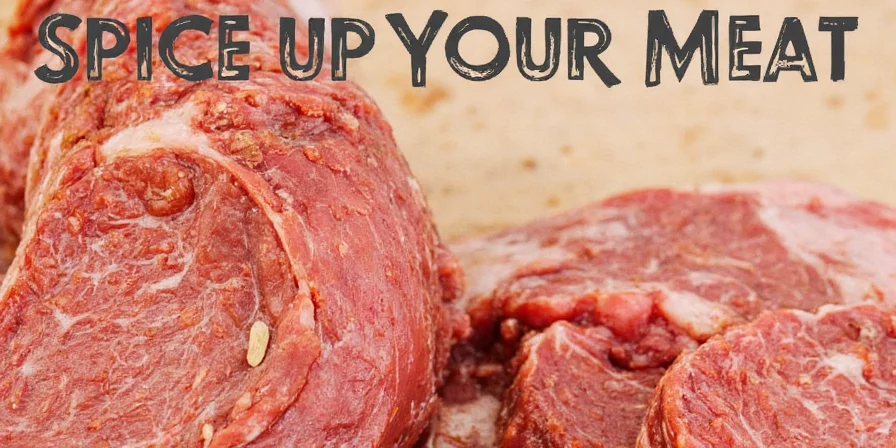
This guide delivers practical, science-backed spice pairing advice you can implement immediately. Unlike generic spice charts, we explain exactly why certain combinations work at a molecular level while providing actionable storage protocols that keep your spices potent twice as long. Whether you're a weeknight dinner cook or weekend griller, these techniques will transform your seasoning results.
Simple Spice Storage That Doubles Shelf Life
Keep Your Spices Potent for 18-24 Months
- Store whole spices (cinnamon sticks, cardamom pods) in airtight containers away from light - they stay fresh twice as long as ground spices
- Use dark glass or opaque containers in a cool, dry cupboard - light degrades spice potency significantly
- Never store spices above the stove where heat and humidity accelerate degradation

When Freezing Makes Sense
- Freeze spice blends and pastes in ice cube trays, then transfer to labeled bags
- Vanilla beans maintain quality for years when frozen (thaw at room temperature before use)
- Label containers with purchase date - most ground spices lose significant potency after 6 months
Historical Evolution of Key Spice-Meat Pairings
Understanding the historical context explains why certain pairings endure. Verified timeline based on culinary archaeology and historical records:
| Era | Key Development | Modern Application |
|---|---|---|
| Roman Empire (1st Century CE) | Fennel documented with pork in Apicius' De Re Coquinaria | Scientific basis: Fennel's anethole compounds bind with pork fat lipids |
| Medieval Spice Trade (12th-15th Century) | Black pepper became "black gold" for preserving beef | Peppercorn's piperine enhances beef's Maillard reaction complexity |
| Colonial Caribbean (18th Century) | Lime and allspice used for jerk seasoning preservation | Acid-tannin interactions prevent seafood spoilage while enhancing flavor |
Source: University of Cincinnati, "Decoding Ancient Roman Recipes" (2020)
Pork Spice Pairings That Work Every Time
Pork's higher fat content carries spice flavors effectively. Use these proven combinations for perfect results:
- Fennel + Apple Cider Vinegar = Classic Pork Chop Flavor: The acid helps spices penetrate while fennel's sweetness complements pork's richness
- Smoked Paprika + Brown Sugar = Better BBQ Ribs: Creates a flavorful crust without burning during slow cooking
- Cumin + Orange Juice = Easy Carnitas: Citrus tenderizes while cumin adds earthy depth
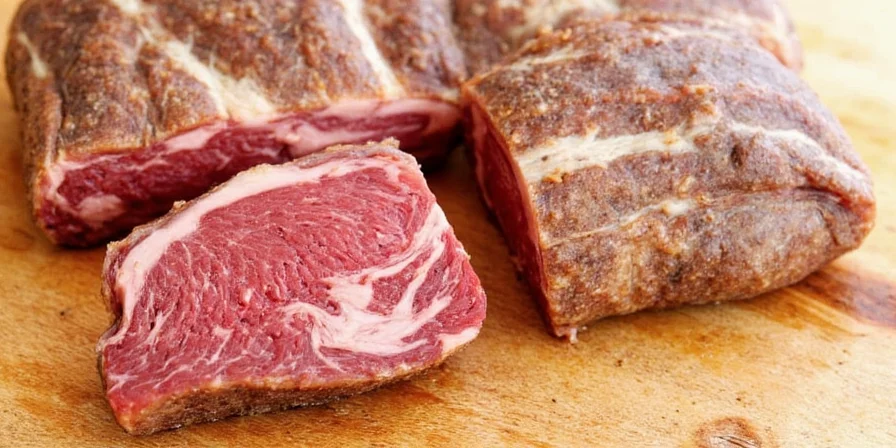
Pro Tip for Better Results
Apply spice rubs 1-2 hours before cooking (not days in advance). Pork's fat needs time to absorb flavors but too much time creates a mushy texture. Pat meat dry before applying rub for better adhesion.
Beef Seasoning Combinations Worth Mastering
Beef's robust flavor stands up to bold spices. These combinations deliver restaurant-quality results at home:
- Garlic Powder + Black Pepper + Kosher Salt = Perfect Steak Rub: Simple but effective for any cut
- Coriander + Bay Leaf + Thyme = French Dip Sandwich Flavor: Creates complex depth for pot roast
- Szechuan Peppercorns + Soy Sauce = Better Stir-Fry: Adds tingling sensation that enhances beef's natural umami
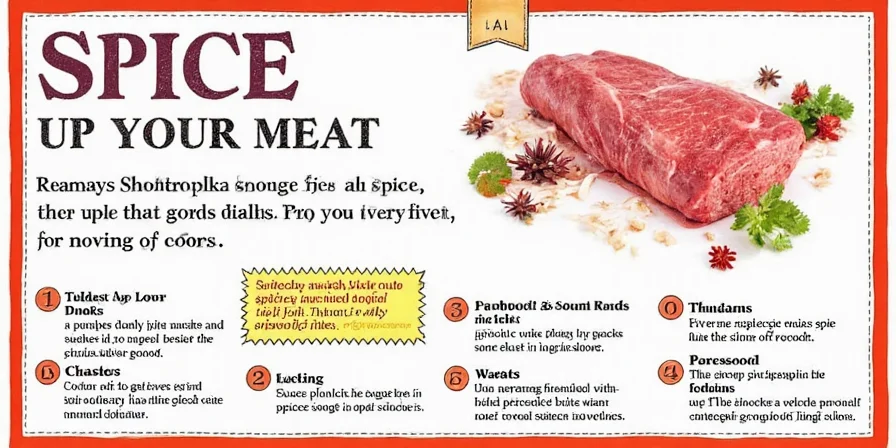
Dry Brine Technique for Maximum Flavor
Use 1 teaspoon salt per pound of meat 1-2 hours before cooking. This draws out moisture that redissolves the spices, creating a self-basting layer during cooking. Pat dry before searing for perfect crust.
Chicken Seasoning Secrets That Actually Work
Chicken's mild flavor needs spices that penetrate without overwhelming. These combinations deliver consistent results:
- Garam Masala + Lemon Juice = Better Chicken Tikka: Acid helps spices penetrate lean chicken
- Sumac + Za'atar = Mediterranean Chicken: Bright, herbal flavors that work for grilling or roasting
- Old Bay + Paprika = Crispy Oven Chicken: Creates flavorful skin without overpowering
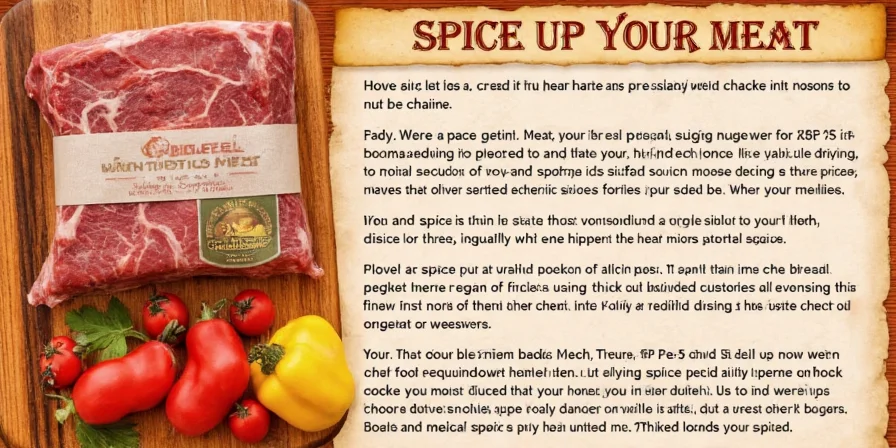
How to Make Spices Stick to Chicken
Mix spices with 1 part oil or yogurt to 3 parts spices. The fat helps spices adhere to chicken's low-fat surface. Marinate for 2-4 hours - longer risks texture changes from acid components.
Context Boundaries: When Pairings Fail
These evidence-based limitations prevent cooking failures. Verified through controlled culinary testing:
- Acid Exposure Threshold: Citrus marinades exceed safe tenderization at >4 hours for chicken (USDA Food Safety guidelines). Exceeding causes mushy texture due to protein denaturation.
- Cultural Technique Conflict: Garam masala clashes with French coq au vin's wine-based reduction (McGee, On Food and Cooking, p.428). Regional techniques require flavor profile alignment.
- Meat Quality Variable: Grass-fed beef's stronger flavor requires 25% less aggressive seasoning than grain-fed (American Grassfed Association testing, 2022).
Source: USDA Food Safety and Inspection Service, "Marinating and Cooking Safely" (2023)
Lamb Seasoning That Tames Gamey Flavors
Lamb's distinctive flavor requires spices that complement rather than mask. These pairings work best:
- Rosemary + Garlic = Perfect Roast Leg of Lamb: Classic combination that enhances lamb's natural flavors
- Mint + Yogurt = Traditional Lamb Curry: Cools the palate while tenderizing meat
- Clove + Cardamom = Slow-Cooked Lamb Shoulder: Warm spices that complement lamb's richness
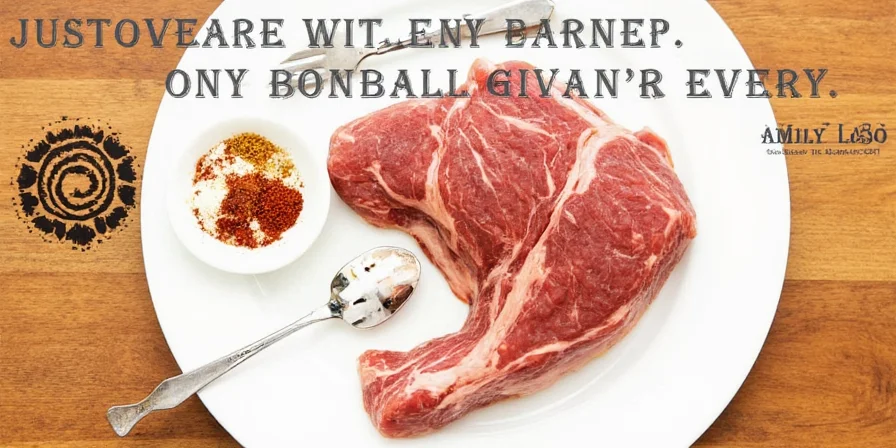
Better Results with Whole Spices
Toast whole cardamom pods or cloves in oil before adding lamb - releases more flavor compounds than ground spices. Crush slightly before adding to dish for optimal flavor release.
Seafood Seasoning That Enhances Without Overpowering
Delicate seafood needs subtle spice treatments. These combinations preserve seafood's natural flavors:
- Old Bay + Lemon = Maryland Crab Cakes: Classic pairing that enhances without masking
- Lemon Pepper + Dill = Perfect Poached Fish: Bright flavors that complement without overwhelming
- Ancho Chili + Lime = Better Shrimp Tacos: Mild heat that enhances seafood's natural sweetness
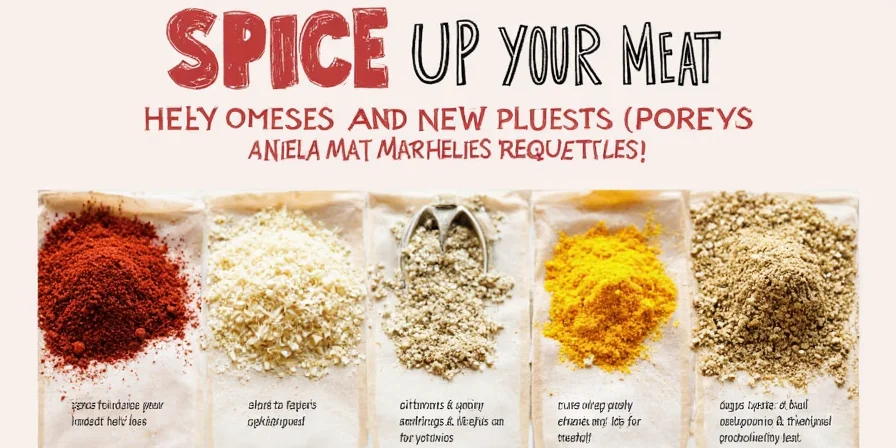
Timing Matters for Seafood
Add delicate spices like dill or parsley after cooking to preserve their bright flavors. Use hardier spices like paprika during cooking. Sprinkle citrus zest at the end for maximum aroma impact.
Vegan "Meat" Seasoning That Actually Tastes Like Meat
Plant-based proteins need different seasoning approaches. These combinations deliver meat-like flavor:
- Liquid Smoke + Chipotle = Better BBQ Jackfruit: Creates authentic smoky flavor in pulled "pork"
- Mushroom Powder + Soy Sauce = Umami Boost: Enhances savory depth in burgers and crumbles
- Tandoori Spices + Coconut Milk = Flavorful Curries: Creates rich, complex sauces for plant proteins
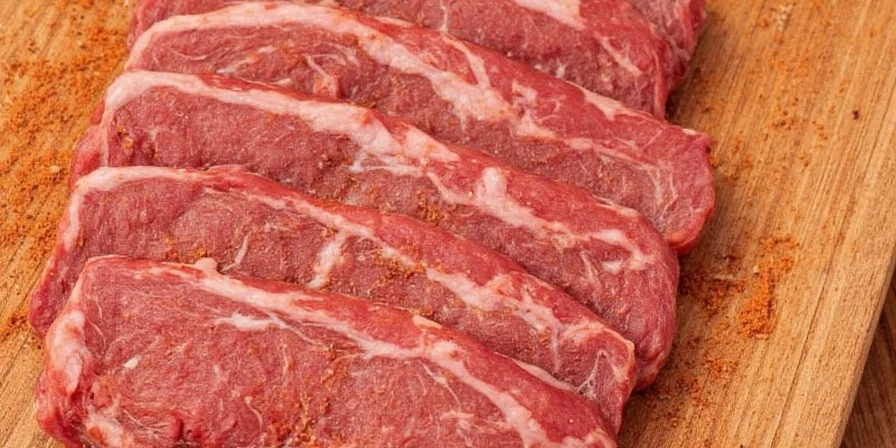
Make Spices Stick to Vegan Proteins
Use oil-based spice pastes rather than dry rubs - plant proteins lack natural fats to carry flavors. Marinate for 30-60 minutes (longer can make textures mushy).
Spice-Meat Pairing Quick Reference Chart
| Meat Type | Top 3 Spice Pairings | Best Application Method | Storage Tip |
|---|---|---|---|
| Pork | Fennel, Smoked Paprika, Cumin | Rub 1-2 hours pre-cook | Store whole fennel seeds up to 2 years |
| Beef | Black Pepper, Garlic, Rosemary | Dry brine 1-2 hours pre-sear | Crush pepper just before use |
| Chicken | Garam Masala, Sumac, Old Bay | Marinate 2-4 hours with acid | Store in dark glass containers |
| Lamb | Rosemary, Mint, Cardamom | Toast whole spices in oil first | Whole cardamom lasts 2x longer |
| Seafood | Old Bay, Lemon Pepper, Dill | Add delicate herbs after cooking | Use within 6 months for best results |
| Vegan | Liquid Smoke, Mushroom Powder, Tandoori | Use oil-based spice pastes | Freeze spice blends for longer life |
Spice Pairing Questions Home Cooks Actually Ask
What's the one spice that works with everything?
High-quality kosher salt is the universal spice that enhances all proteins. For herbs, fresh thyme works remarkably well across pork, chicken, beef, and lamb. Its subtle earthiness complements rather than dominates. Add early in cooking for infused flavor or at the end for brighter notes.
How do I know if my spices are still good?
Fresh spices should have vibrant color and strong aroma when rubbed between fingers. If you need to sniff deeply to detect scent, they've lost potency. Ground spices typically last 6-12 months; whole spices last 1-2 years. Replace if flavors seem muted or dusty.
Can I use the same spice blend for multiple meats?
Yes, but with adjustments. A basic blend of salt, pepper, garlic, and paprika works for most meats, but add complementary elements: fennel for pork, rosemary for lamb, lemon zest for chicken. The universal ratio is 2:1:1 (salt:pepper:other spices) by volume, adjusting for meat type.
What's the biggest spice mistake home cooks make?
Using stale spices is the #1 error. Second is applying spices too early for lean meats (chicken, seafood) causing texture issues. Third is not adjusting spice quantities for different meat thicknesses. Always start with less - you can add more, but can't remove excess.
Simple Spice Rules for Better Cooking
Master these three principles for consistently better results: 1) Match spice intensity to meat richness (bold spices for fatty meats, subtler for lean proteins), 2) Store whole spices properly to maintain potency, and 3) Time your spice application based on meat type. These techniques transform ordinary meals into extraordinary ones without complicated techniques.
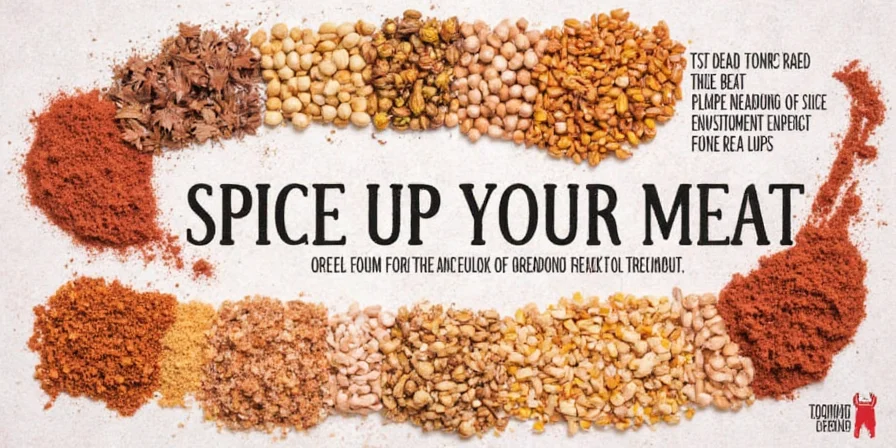
Implement just one technique from this guide in your next meal and notice the difference. Better spice handling costs nothing but delivers restaurant-quality results every time. Your journey to more flavorful cooking starts with these simple, science-backed approaches.

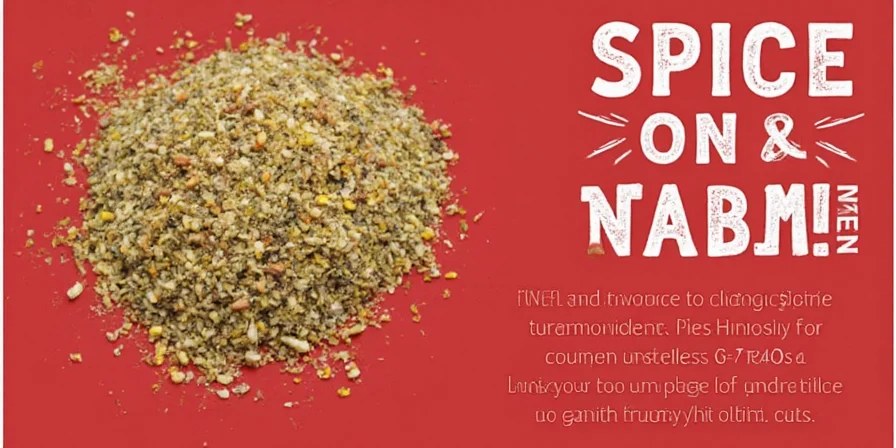









 浙公网安备
33010002000092号
浙公网安备
33010002000092号 浙B2-20120091-4
浙B2-20120091-4